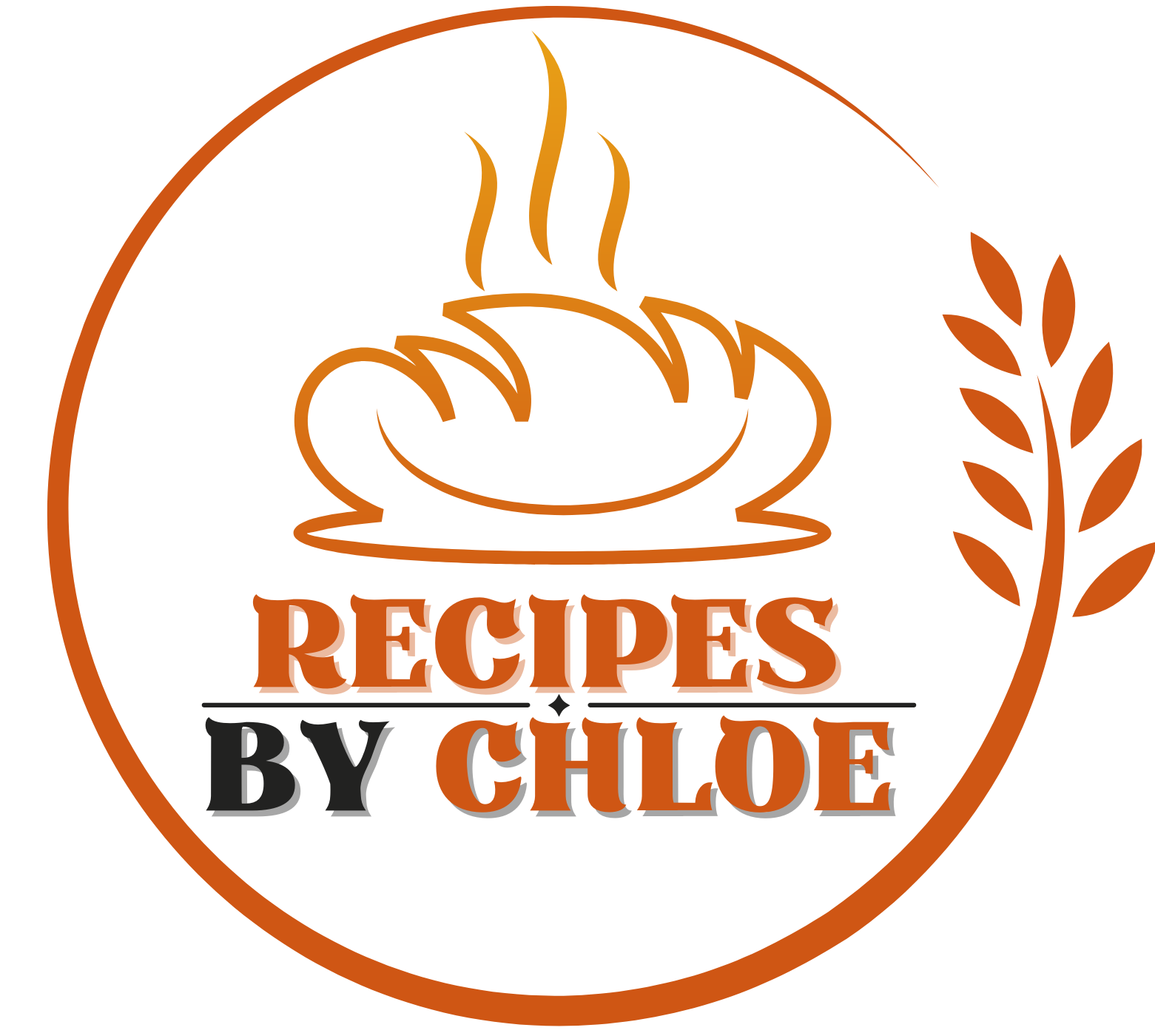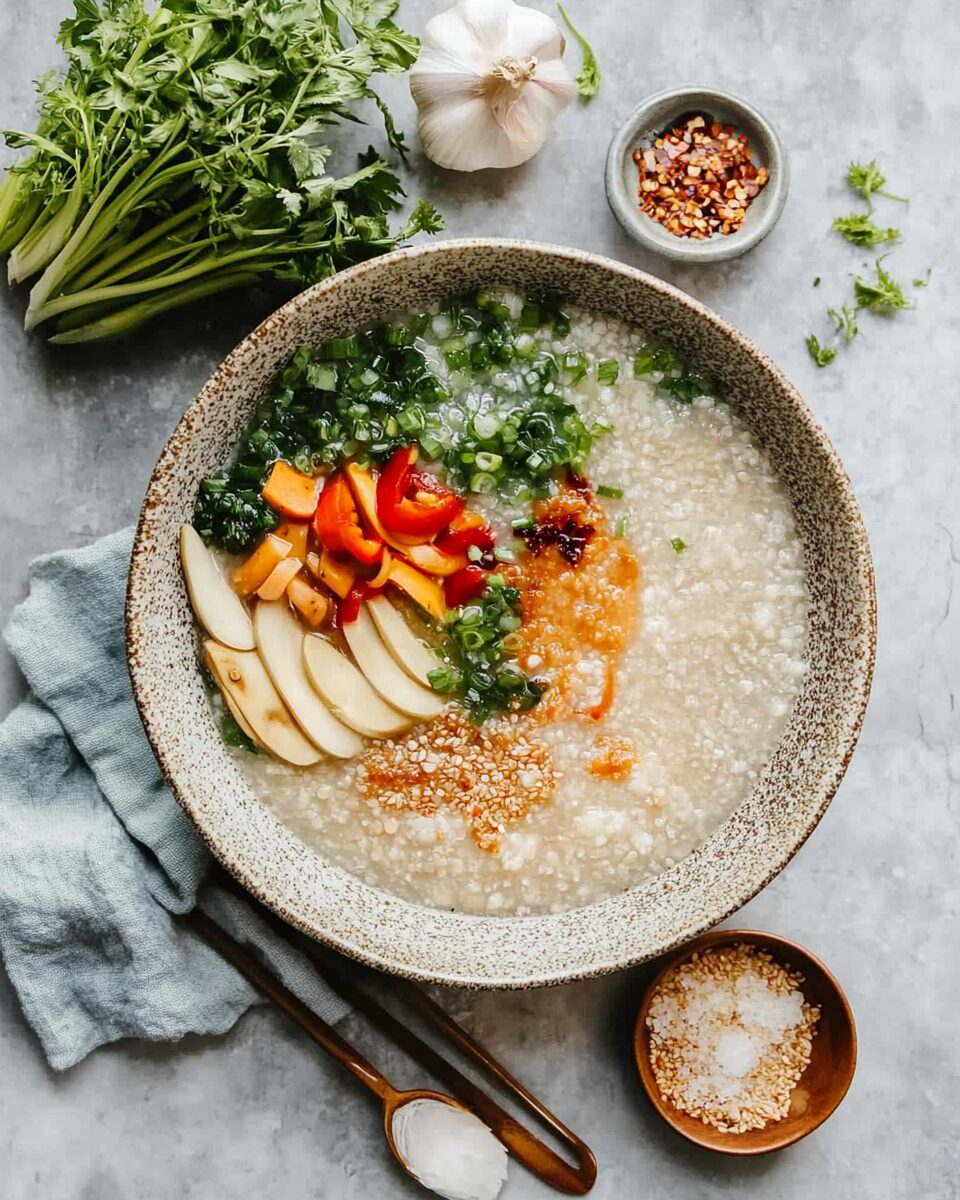Congee, also known as jook in Cantonese (粥), is a beloved comfort food in many Asian cultures. Traditionally made with rice and various proteins, this vegan version offers a plant-based twist without compromising on flavor.
Full Recipe:
Ingredients
For the Congee:
- 1 cup jasmine rice
- 6 dried shiitake mushrooms
- 4 cups water, divided
- 5 cups vegetable broth
- 2 to 3 stalks lemongrass, sliced into 3 to 4-inch chunks
- 2-inch piece of ginger, peeled and sliced
- 2 cloves garlic, smashed
- 1 teaspoon kosher salt (adjust to taste)
Optional Toppings:
- Soy sauce
- Chili oil
- Ground white pepper
- Furikake
- Fried onions
- Finely sliced scallions
- Youtiao (Chinese fried dough sticks)
Directions
Preparation:
- Rinse the jasmine rice once to remove excess starch and drain.
- Bring 2 cups of water to a boil and pour it into a bowl.
- Quickly rinse the dried shiitake mushrooms and add them to the hot water. Let them soak for 30 to 45 minutes.
Stovetop Method:
- In a large pot, combine the drained rice, soaked mushrooms along with their soaking water, remaining 2 cups of water, vegetable broth, lemongrass, ginger, garlic, and salt.
- Cover the pot and bring the mixture to a boil. Reduce the heat to low and let it simmer for 1 hour, checking occasionally to prevent boiling over.
- After an hour, uncover the pot and stir the congee. It may appear watery, which is normal. Turn off the heat, cover the pot with the lid slightly ajar, and let it sit for 15 to 20 minutes to thicken.
- If the congee remains too watery, simmer on low heat for an additional 15 minutes.
- Remove the mushrooms, lemongrass, ginger, and garlic if desired. Serve the congee in bowls, adding your preferred toppings.
Instant Pot Method:
- In the Instant Pot, combine the drained rice, soaked mushrooms with their soaking water, remaining 2 cups of water, vegetable broth, lemongrass, ginger, garlic, and salt.
- Secure the lid and select the “Manual” setting. Cook on high pressure for 30 minutes.
- Allow the pressure to release naturally, which will take about 15 to 20 minutes.
- Once the pressure has released, open the lid. The congee may appear watery; stir it and let it sit with the lid slightly ajar for 15 to 20 minutes to thicken.
- Remove the mushrooms, lemongrass, ginger, and garlic if desired. Serve the congee in bowls, adding your preferred toppings.
Nutrients
Per serving (1 serving):
- Calories: 184 kcal
- Carbohydrates: 41.7 g
- Protein: 3.6 g
- Fat: 0.1 g
- Sodium: 780 mg
- Fiber: 1.7 g
- Sugar: 3.2 g
The Appeal of Congee in Different Cultures
Congee, or “jook” as it is known in Cantonese, has a deep-rooted cultural history across Asia. In China, it is considered a staple food and is served in many different forms, often depending on regional variations. In Southeast Asia, congee has its own unique adaptations, with each country adding its flavors, spices, and toppings. For example, in Vietnam, congee is often served with ginger, garlic, and herbs, while in Thailand, it is paired with spicy condiments like chili oil.
The beauty of congee lies in its versatility. It can be served plain, allowing the delicate flavor of the rice to shine through, or topped with a variety of ingredients such as pickled vegetables, tofu, or even salted eggs. This flexibility is one of the reasons why congee has become a comforting go-to meal in many Asian households. By using plant-based ingredients like mushrooms and vegetable broth, this vegan congee recipe offers a modern, plant-friendly twist on a traditional favorite.
Health Benefits of Vegan Congee
Vegan congee is more than just a comforting meal; it also provides numerous health benefits. The combination of rice, mushrooms, and vegetable broth makes it a nutritious dish packed with essential nutrients. Rice, the primary ingredient, is a good source of carbohydrates, providing energy and fuel for the body. While some people may shy away from rice due to concerns about its carbohydrate content, it’s important to note that the slow-release carbohydrates in rice can help maintain stable blood sugar levels, making it a suitable choice for those with insulin resistance or diabetes when consumed in moderation.
Mushrooms, particularly shiitake mushrooms used in this recipe, offer a rich source of vitamins, minerals, and antioxidants. Shiitake mushrooms have long been revered for their medicinal properties, particularly in Eastern medicine, where they are believed to strengthen the immune system and improve overall health. They are also a good source of vitamin D, which is essential for bone health, and they contain beta-glucans, which have been shown to have anti-inflammatory and immune-boosting effects.
The addition of ginger and garlic not only enhances the flavor of the congee but also provides a natural immune boost. Ginger has long been used in traditional medicine for its anti-inflammatory and digestive properties, while garlic is known for its ability to support heart health and reduce the risk of chronic diseases. Together, these ingredients create a harmonious and flavorful base that is both satisfying and nourishing.
A Versatile Dish for Any Time of Day
One of the greatest advantages of vegan congee is its versatility. While it is often enjoyed as a breakfast dish in many Asian cultures, congee can be eaten at any time of the day. It can be served as a light lunch, a warming dinner, or even as a midnight snack. In fact, congee is often enjoyed as a remedy for ailments, particularly when someone is feeling under the weather or recovering from illness. The warm, easy-to-digest consistency of congee makes it a comforting choice for those who may be dealing with nausea, an upset stomach, or a cold.
The great thing about congee is that it is easily customizable based on personal preferences and dietary needs. While the basic recipe is inherently vegan, it can be further adapted to suit various tastes and nutritional requirements. For example, if you are looking for a protein boost, you can add tofu or tempeh to the dish. If you prefer a more savory congee, you can add extra seasonings like soy sauce, miso, or even a dash of sesame oil for added depth of flavor. The toppings are where you can get creative—whether you choose to sprinkle chili flakes for some heat, garnish with fresh herbs, or add crispy fried onions, the options are endless.
Nutritional Considerations and Customizations
Vegan congee is a nutritious, low-fat meal that can be easily adjusted to fit various dietary needs. It’s naturally gluten-free, making it a suitable option for individuals with celiac disease or gluten sensitivity. Additionally, it is suitable for people following plant-based diets or those looking to reduce their meat consumption. The recipe can be adapted for different calorie needs by adjusting the toppings and the amount of rice used in the dish. For example, if you are looking to reduce the calorie content, you can use cauliflower rice as a substitute for regular jasmine rice.
For individuals who follow a low-sodium diet, the use of homemade vegetable broth can significantly reduce the sodium content of the dish, as store-bought broths often contain added salt. Similarly, if you are looking for a lower-carb version, you can swap the rice with quinoa or another whole grain of your choice, which will also add extra protein and fiber to the dish.
For those who are looking to boost the fiber content, adding vegetables like spinach, kale, or bok choy can turn this already nutritious meal into a powerhouse of vitamins and minerals. By incorporating a variety of plant-based ingredients, you can increase the overall nutrient density of the dish while still maintaining the essence of the traditional congee.
The Comfort of Home-Cooked Meals
In an age where convenience foods and takeout meals have become a staple, there is something undeniably special about preparing a meal from scratch. Vegan congee is an excellent example of a dish that can be made at home with simple ingredients, yet it provides a deep sense of comfort and satisfaction. Cooking from scratch allows you to control the quality of the ingredients and customize the recipe to suit your tastes and dietary preferences.
Conclusion: A Plant-Based Comfort Food for All
Vegan congee is a delicious and versatile dish that offers all the comforting qualities of the traditional congee while being entirely plant-based. With its umami-rich flavor, hearty texture, and numerous health benefits, it is a meal that can be enjoyed by anyone, regardless of dietary preferences. Whether you’re looking for a light breakfast, a warm lunch, or a nourishing dinner, this recipe provides a satisfying and customizable option that is easy to prepare and full of flavor.






